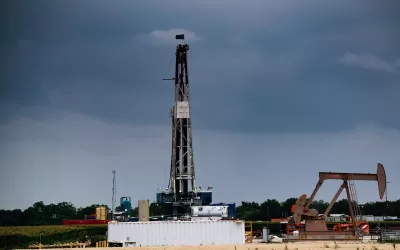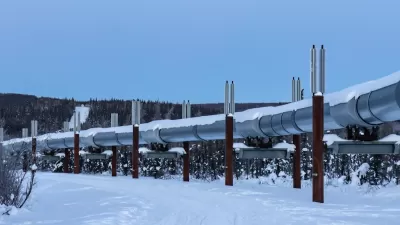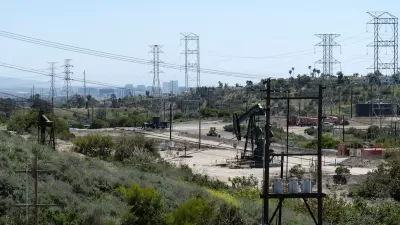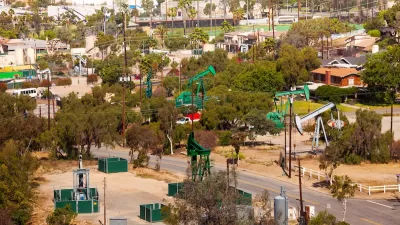A new study reveals earthquakes that began at shallower depths than previously thought are associated with wastewater disposal sites from fracking operations.

A series of earthquakes in Texas’ Permian Basin that happened before 2017 began at shallower depths than previously thought, indicating they could have been caused by wastewater disposal related to fracking operations.
According to an article by Miriam Fauzia in Governing, “Leftover wastewater may be reused for further fracking or injected underground into saltwater disposal wells. If the injection is near a fault line — a vulnerable fracture between two blocks of rock — the stress can trigger an earthquake. A 2019 study investigating quakes in North Texas found that pressure changes from disposal wells made fault lines more likely to rupture.”
A new study used a mathematical tool called “hypocentroidal decomposition” to recalculate the depth of older earthquakes, revealing that many more of them correlate with water injection sites than previously believed.
Fauzia points out that in addition to the ramifications for fracking, “the findings hold significance for environmental efforts like carbon capture and storage, a process where carbon dioxide emissions are trapped and stored underground,” which could be complicated by the presence of faults and risk of causing earthquakes.
FULL STORY: Fracking in Texas Connected to Past Earthquakes, Study Finds

Study: Maui’s Plan to Convert Vacation Rentals to Long-Term Housing Could Cause Nearly $1 Billion Economic Loss
The plan would reduce visitor accommodation by 25,% resulting in 1,900 jobs lost.

North Texas Transit Leaders Tout Benefits of TOD for Growing Region
At a summit focused on transit-oriented development, policymakers discussed how North Texas’ expanded light rail system can serve as a tool for economic growth.

Using Old Oil and Gas Wells for Green Energy Storage
Penn State researchers have found that repurposing abandoned oil and gas wells for geothermal-assisted compressed-air energy storage can boost efficiency, reduce environmental risks, and support clean energy and job transitions.

Private Donations Propel Early Restoration of Palisades Playground
Los Angeles has secured over $1.3 million in private funding to restore the Pacific Palisades playground months ahead of schedule, creating a modern, accessible space that supports community healing after recent wildfires.

From Blight to Benefit: Early Results From California’s Equitable Cleanup Program
The Equitable Community Revitalization Grant (ECRG) program is reshaping brownfield redevelopment by prioritizing projects in low-income and environmental justice communities, emphasizing equity, transparency, and community benefits.

Planting Relief: Tackling Las Vegas Heat One Tree at a Time
Nevada Plants, a Las Vegas-based nonprofit, is combating the city’s extreme urban heat by giving away trees to residents in underserved neighborhoods, promoting shade, sustainability, and community health.
Urban Design for Planners 1: Software Tools
This six-course series explores essential urban design concepts using open source software and equips planners with the tools they need to participate fully in the urban design process.
Planning for Universal Design
Learn the tools for implementing Universal Design in planning regulations.
Ascent Environmental
Borough of Carlisle
Institute for Housing and Urban Development Studies (IHS)
City of Grandview
Harvard GSD Executive Education
Toledo-Lucas County Plan Commissions
Salt Lake City
NYU Wagner Graduate School of Public Service





























